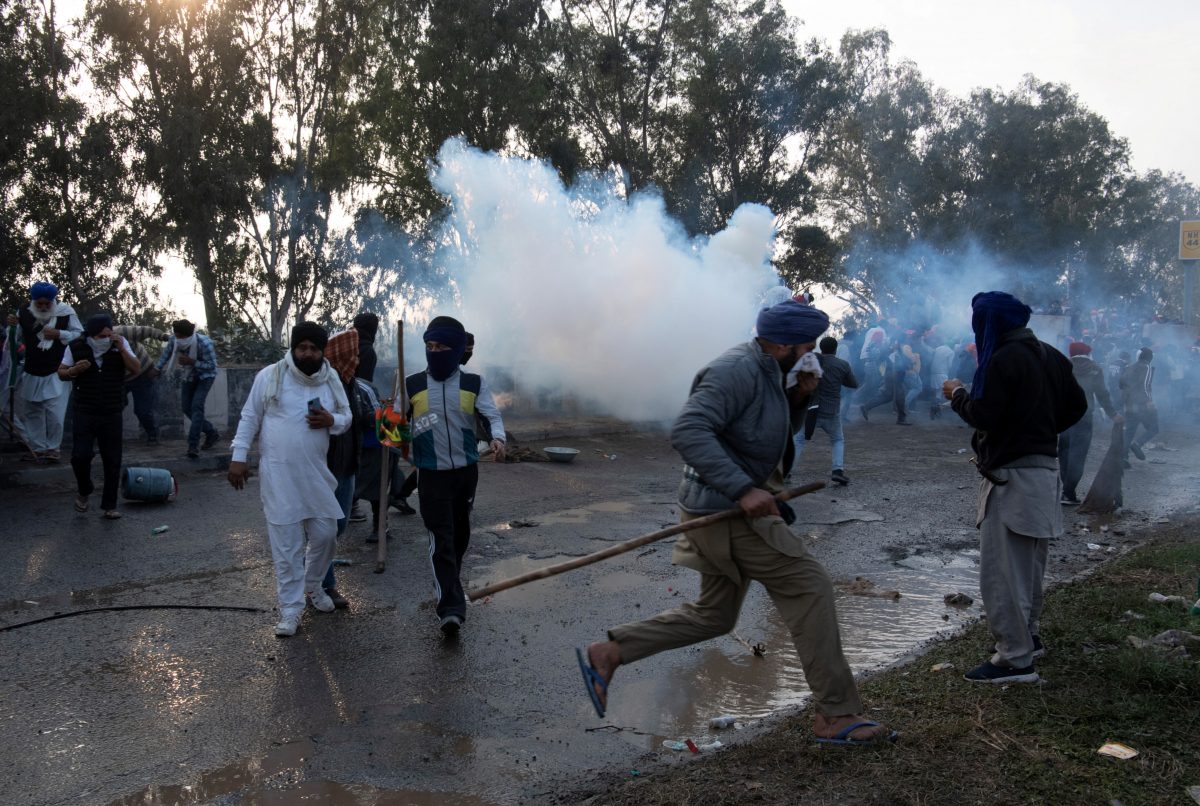AMBALA, India, (Reuters) – Indian security forces fired tear gas at protesting farmers for a second day today to stop tens of thousands from marching to the capital New Delhi to demand higher prices for their produce.
Travelling on trucks and trolleys loaded with food, bedding and other supplies, the farmers began their “Delhi Chalo” (Let’s go to Delhi) march on Tuesday morning after talks with the government failed to yield a commitment on minimum prices for a range of crops.
Authorities imposed tight security arrangements in areas bordering New Delhi, with hundreds of personnel in riot gear deployed amid cement blocks topped with barbed wire and shipping containers as barriers in the path of the convoy.
Security forces stopped the farmers at the Shambhu border that divides Punjab and Haryana – the northern states to which most of the farmers belong – almost 200 km (125 miles) from their destination.
Protesters threw stones and tried to break down barricades, Haryana Director General of Police Shatrujeet Kapur said.
“Police and paramilitary forces used minimum force (like) tear gas and water cannon and kept the situation under control,” he said.
Security forces also used drones to drop tear gas canisters on farmers who, in response, released kites into the sky in the hope of entangling the machines.
Multiple farmers’ unions said they would protest against the police action by blocking rail traffic at several places in Punjab for four hours on Thursday.
‘WE WON’T BE FOOLED’
A similar year-long protest in 2021 by farmers, a powerful voting bloc, had pushed Prime Minister Narendra Modi’s government to repeal some farm laws and promise to find ways to ensure support prices for all farm produce.
Farmers say the government has been slow on fulfilling the latter promise.
“Last time they fooled us but this time we won’t be fooled. We will not return until our demands are met,” said 23-year-old Jasmeet Singh, a resident of Haryana’s Ambala region who also participated in the protests in 2021.
The latest protests come just months before a national election in which Modi will seek a third term.
Leaders of farmers’ unions said the government should accept their demands or “democratically” allow them to go to Delhi.
“But they are not doing either,” said Sarwan Singh Pandher, general secretary of the Punjab Kisan Mazdoor Sangharsh Committee.
The government has appealed to farmers to come forward to discuss their demands, with Agriculture Minister Arjun Munda saying that efforts will continue to speak to them “in a constructive and positive manner”.
However, an influential farmers’ union linked with Modi’s party on Wednesday rejected demands raised by the protesting farmers.
The leader of Bharatiya Kisan Sangh (BKS) or the Indian Farmers’ Group, said the protests were masterminded by opposition political parties with the aim of fracturing Modi’s agrarian reforms.
“Protesting farmer groups do not represent concerns of all farmers, their views are limited to regional agrarian practices,” said Mohini Mohan Mishra, general secretary of BKS.
TIME FOR TEA
A rare moment of respite in the protest came in the afternoon when farmers moved back to their vehicles for lunch, lining up to be served. In some places, farmers and police stood side-by-side, warming themselves with cups of tea against a backdrop of rows of barricades.
Traffic was disrupted across Delhi’s border regions. On Grand Trunk Road, which connects Delhi to Punjab via Haryana, vehicles were redirected for the last 20 km (12 miles) through side roads.
The opposite carriageway, carrying commuters to Delhi, remained deserted, with traffic movement prohibited along its entire 150 km Haryana stretch.
Haryana has also suspended mobile internet services, bulk messaging, and dongle services in several parts until Thursday night.





